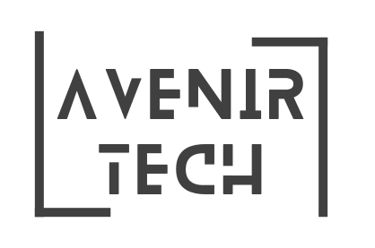The Role of Artificial Intelligence in Embedded Systems
Discover how AI is revolutionizing embedded systems by enabling smarter, real-time decision-making across industries. Learn how embedded services companies support this intelligent transformation.
AVENIR TECH
7/2/20253 min read


Artificial Intelligence (AI) has become a cornerstone of modern innovation, and its integration with embedded systems is driving a new era of intelligent devices. From smartwatches to industrial automation, AI-powered embedded systems are transforming how machines process data, make decisions, and interact with their environment.
This convergence of AI and embedded systems is not just a technological evolution—it’s shaping the future of smart devices across industries. Let’s explore what this means and why it’s significant.
What Are Embedded Systems?
An embedded system is a specialized computing system designed to perform a dedicated function within a larger device. Unlike general-purpose computers, embedded systems are built to carry out specific tasks, often with real-time constraints.
Examples include:
Microcontrollers in household appliances
Control units in vehicles
Smart sensors in medical devices
IoT devices in smart homes
These systems typically operate with limited memory, processing power, and power consumption—but they are highly optimized for their specific roles.
How Artificial Intelligence Enhances Embedded Systems
When AI is integrated into embedded systems, these devices gain the ability to learn, adapt, and make decisions without constant human intervention. This leads to:
1. Improved Real-Time Decision Making
AI algorithms allow embedded systems to analyze data in real time and respond intelligently. For example, a smart camera can distinguish between objects and take action based on what it sees—such as triggering alerts or adjusting lighting conditions.
2. Predictive Maintenance and Diagnostics
In industrial environments, AI-powered sensors embedded in machinery can predict equipment failures before they happen. This reduces downtime and extends the life of the equipment.
3. Smarter Consumer Electronics
Voice assistants, smart TVs, and wearable devices are all examples of AI embedded systems that can personalize user experiences based on behavior and preferences.
4. Enhanced Efficiency and Automation
Embedded AI systems optimize energy use, automate repetitive tasks, and reduce human error. This is particularly valuable in sectors like agriculture, healthcare, and manufacturing.
Key Technologies Behind AI in Embedded Systems
Integrating AI into compact, resource-constrained environments like embedded systems requires a combination of specialized technologies:
Edge Computing: Enables data processing at the device level, reducing the need for constant cloud communication.
Lightweight AI Models: Optimized algorithms designed to run efficiently on low-power hardware.
Neural Processing Units (NPUs): Custom chips that accelerate AI tasks in real-time.
Firmware Integration: Ensures the AI logic is tightly embedded into the system software.
These innovations make it possible for even small devices to perform intelligent functions efficiently.
Applications Across Industries
The fusion of AI with embedded systems is already making a difference in a variety of sectors:
Automotive: Driver assistance systems, lane detection, and vehicle diagnostics.
Healthcare: AI-enabled diagnostic tools and monitoring systems.
Agriculture: Smart irrigation systems and crop monitoring sensors.
Retail: Intelligent point-of-sale systems and inventory management tools.
Energy: Smart grids and real-time energy usage optimization.
As demand grows, many businesses are turning to experienced embedded services companies to develop tailored AI-integrated solutions that fit specific operational needs.
Challenges and Considerations
While AI offers significant advantages, integrating it into embedded systems comes with unique challenges:
Hardware Limitations: Many embedded systems lack the processing power needed for complex AI tasks.
Energy Efficiency: Balancing performance and power consumption is critical.
Security Risks: AI systems can be vulnerable to data manipulation or cyberattacks if not properly secured.
Cost and Complexity: Designing AI-ready embedded systems can be more resource-intensive compared to traditional systems.
Despite these hurdles, ongoing advancements in hardware and software are steadily addressing these issues, making AI in embedded systems more accessible and practical.
Final Thoughts
The intersection of Artificial Intelligence and embedded systems represents a powerful shift in how machines operate and interact with their surroundings. From smarter automation to real-time intelligence, this integration is fueling innovation across multiple domains.
For organizations looking to stay ahead of the curve, collaborating with reliable embedded services companies can ensure robust, efficient, and future-ready solutions. As technology continues to evolve, AI-powered embedded systems will be at the heart of the next generation of intelligent devices.
© Avenir Tech 2025. All rights reserved.
Subscribe to our newsletter
Company
